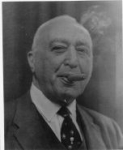In my unscientific observation, in Houston (humidity average 65-80%) if I did not have the humidifier on my S9 Auto set to 3 (middle setting), I would suffer from nosebleeds and general sinus discomfort during the day. Higher setting had no effect (seems obvious if the humidity is 80%) and lower setting just dried me out badly, causing cracking/nosebleeds.
Now that I'm in Dallas (average humidity 35-55%), I have the humidity setting turned off but still put water in the tank, basically causing a passive increase in humidity. I eventually arrived at this setup after suffering horrible nosebleeds with the humidity set to the same setting as I did in Houston. I stepped it down one notch every few nights and found that I improved each time. A week after setting the active humidifier to off, I was sleeping so well again that I forgot about it...and forgot to fill my tank back up, resulting in two days of very dry sinuses and some moderate nosebleed issues. Refilled the tank and left it set to off and haven't had a single problem in over a month now with no other variations in sinus-related behavior or climate.
I suspect there are two primary factors involved here:
- The drying effect of higher air turbulence and velocity (identical to blowing on your hands to dry them after washing them) relative to the rate at which your sinus mucous membranes hydrate themselves.
- The ambient humidity where you live.
With regards to the first point, passive humidification from simply having water in the tank might be enough. Turning on the active humidifier helps when that isn't enough.
As for the second point, when you present a completely different humidity environment at night versus what you experience during the day, you traumatize your sinus mucous membranes. Again, my unscientific observation is that having the higher humidity setting in a dry climate caused me the same issues I dealt with when I originally moved to Dallas from Houston back before I was on CPAP and the same problem I have had for years going to visit my grandmother in a drier part of the south. Adjusting the machine so that I have only a slightly higher than ambient humidity level keeps my sinus and throat from drying out while not going so far overboard that I am having to radically adjust to the dry air while I'm out and about during the day.
These machines can potentially adjust for some environmental variables but they aren't designed to maintain a set humidity level at the mask. Otherwise, they'd have a sensor built into the mask and an actual humidity setting in the user interface.
Just my two (longwinded) cents.
P.S. Physician, I suspect that the reaction you've gotten in this and other threads here may be due to two things:
- Picking a forum name like Physician, regardless of truth, implies authority in this context and seems pretentious and designed to lend weight to your posts which might not otherwise exist purely on the merits.
- Your choice of verbiage, while possibly a result of attempting to avoid implied meanings or leading questions, generally just makes you sound like you're either asking rhetorically to confirm your own opinions or that you're unwilling to just chat openly with us.
Just sayin.


















